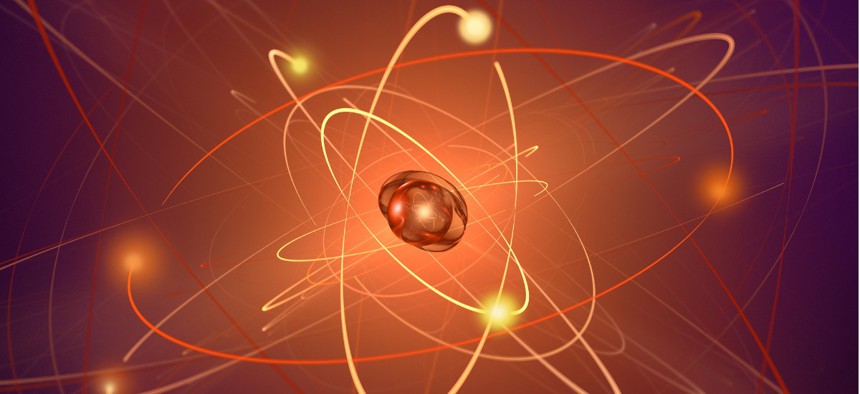Energy Department to Fund Research into All Forms of Nuclear Matter

Pobytov/iStock.com
The agency has $10 million for projects that blend quantum information science with nuclear physics.
The Energy Department aims to fund up to $10 million for research and development projects that fuse nuclear physics and quantum information science to drive transformative outcomes.
Nuclear physics, or NP, hones in on what happens at the very center of an atom—the nucleus—and explores the properties of different forms of nuclear matter. Using advanced computers, those conducting theoretical research calculate interactions involving quarks and gluons, which form protons and neutrons. On the experimental side, tools like quantum sensors and other tools can be used to better understand these elements and the structure of nuclei.
Through its Quantum Horizons funding opportunity, announced late last week, DOE intends to enable research that could push forward breakthroughs across the agency’s NP mission, or that could advance QIS efforts that are underpinned by NP-supported technologies.
“A key objective of this program is to identify and capitalize on unique opportunities to advance both QIS and nuclear science research in ways that align with the national strategy for QIS,” DOE Associate Director of Science for Nuclear Physics Timothy Hallman said in a statement.
Topics of interest to be pursued in this case include quantum computation and simulations, nuclear physics detectors and more.
The 80-page funding announcement provides many, more specific details across five research opportunities. Beyond just weedy scientific assets and areas of study—like for sensors to exploit distinct quantum phenomena—the agency also includes tasks to help build the quantum workforce and boost engagement across multiple sectors.
Still, a primary part of this initiative would be to better “understand all forms of nuclear matter, including some that no longer exist,” officials wrote. “From the hot dense soup of quarks and gluons in the first microseconds after the Big Bang, through the formation of protons and neutrons beginning the evolution of the chemical elements, to the awesome power of supernovae, the physics of nuclei is fundamental to our understanding of the universe,” they added.
Approximately $10 million is anticipated to be made available for all awards under this announcement over several years, and up to $5 million will potentially be made available this fiscal year. The number, duration and size of awards will be dependent on the money that’s made available, the document noted.
Details for how to apply across the various opportunities are provided. Letters of intent from interested participants are due May 21, and full proposals must be submitted by June 18.






